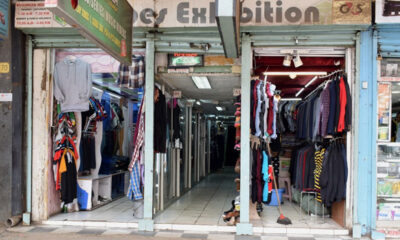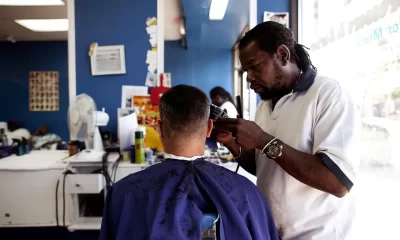Business
Plan to expand SGR by Sh2.1 trillion to Kisumu, Malaba, and Isiolo
The State Department of Transport will construct an additional 2,746 kilometres of the SGR, costing Sh2.1 trillion, according to the plan, bringing the total amount spent on the modern railway to more than Sh2.75 trillion.

According to a government document obtained by the Business Daily, Kenya has set a goal of completing its Sh2.1 trillion plan to extend the Standard Gauge Railway (SGR) to Kisumu, Malaba, and Isiolo by the end of June 2027.
The State Department of Transport will construct an additional 2,746 kilometres of the SGR, costing Sh2.1 trillion, according to the plan, bringing the total amount spent on the modern railway to more than Sh2.75 trillion.
The plan, which is a portion of the Sh3.42 trillion Lamu Port South Sudan-Ethiopia Transport (Lapsset) project, was taken from the Jubilee Government’s grand plan on SGR, which is currently Kenya’s most expensive project.
Lapsset aims to encourage movement within Kenya, South Sudan, and Ethiopia in order to open up northern Kenya and restructure the northern corridor.
This ambitious plan calls for the modern railway to not only travel through Kisumu to the border town of Malaba, as originally planned, but also to Isiolo, Moyale, and the island of Lamu.
The route will change from Mombasa County’s Mariakani to Lamu and then to Isiolo. In order to reach the northeastern town of Moyale, which borders Ethiopia, the SGR will have a connection to Isiolo.
The government will extend the SGR from Isiolo to Nairobi, linking the nation’s capital and commercial center with northern Kenya and, eventually, Ethiopia.
The SGR is extended from Naivasha to Malaba via Kisumu.
The majority of the funding for these extra SGR kilometres—roughly Sh1.8 trillion—will come from unnamed external financiers, with the Kenyan government providing the remaining funds.
The Chinese have paid for the SGR from Mombasa to Naivasha so far, totalling Sh656.1 billion.
The longest section of the proposed SGR will run 753.2 kilometres from Isiolo to Nakodok, a small settlement close to the Kenya–South Sudan border.
This SGR phase has cost Sh443.2 billion, according to the Transport Ministry under Kipchumba Murkomen’s leadership.
The Ruto administration intends to spend Sh348.7 billion building the rail line from Lamu to Isiolo, a distance of 544.4 kilometres.
The nation anticipates spending Sh317.8 billion to construct a new SGR line that will run from Isiolo to Moyale, a distance of 475.9 kilometres.
The 325.3-kilometer line from Mariakani to Lamu will set you back Sh257.3 billion.

Nairobi and Isiolo will be connected by a second line that will cost Sh239.2 billion and span 278 kilometres.
The final leg of the SGR, 2C, from Kisumu to Malaba on the Ugandan border, will cost an additional Sh122.9 billion. Phase 2B of the SGR will cost Sh380 billion and connect Naivasha to the lakeside city of Kisumu.
The State Department of Transportation document reveals what seems to be a nearly impossible goal: the government wants to finish the entire transportation system in four years, from 2023 to 2027.
Despite the fact that the ministry’s document states that these railway lines’ construction will start at the beginning of July this year, no funding has been set aside for the SGR for the following three fiscal years.
With the governments of Rwanda and Uganda, the government entered into a tripartite agreement in 2014 to build a standard gauge railway from Mombasa to Kigali, Rwanda, via Kampala.
However, the SGR came to an abrupt end in Naivasha after it was reported that China refused to finance the final section of the modern railway because it was unable to reach an agreement with Uganda.
The SGR will now be finished under President Ruto’s new administration.
In a five-year plan that will see the multibillion-dollar railway line run through Narok, Bomet, Nyamira, Kisumu, and finally Malaba, Mr. Murkomen stated earlier this year that the government wanted to extend the SGR from Naivasha’s Mai Mahiu to the border of Uganda through a partnership with the Chinese government.
“In the long run, we would like to complete the connection of the SGR from Suswa to Kisumu through Bomet, Nyamira, parts of Kisii and later to Malaba. Later, we can think of upgrading the existing MGR via Nakuru to Kisumu and via Eldoret to Malaba,” the CS said in a statement on December 15 last year.
For the next three years, the Transport Ministry will receive Sh100 billion from the Railway Development Levy Fund (RDLF) to renovate the SGR line from Mombasa to Naivasha via Nairobi and construct new sidings.
In order to increase the freight capacity of the modern railway, which is still competing fiercely with trucks, money will also be used to purchase more locomotives and cargo wagons.
Plans to modernize the SGR primarily call for the construction of new Metre Gauge Railways (MGR) or their rehabilitation.
The government intends to spend Sh37.4 billion in fiscal year 2023–2024 on tying these MGR lines to the SGR as well as purchasing new freight wagons and locomotives.
Within the next 12 months, the State will spend Sh11.9 billion to purchase new rolling stock.
Kenya’s 1,620 locomotives and wagons were last purchased from China in 2018.
Tanzania began extending its SGR to neighboring landlocked nations at the beginning of the year after agreeing to pay two Chinese contractors Sh271 billion ($2.2 billion) to build the line’s final 2,102 km.
As a result, the 506 km line becomes the SGR’s longest segment on the continent. By the end of 2026, the line is expected to be finished.
The news that Uganda received funding from the Standard Chartered Bank to begin building its modern railway revived hopes that China would resume financing the final segment of the SGR.
After being unable to secure funding from China, Kampala awarded the contract to construct its first SGR to a Turkish company.
Tanzania, a rival nation in the struggle for control of East Africa’s logistics corridor, is well along the way of building its own SGR while Kenya’s plan to extend its SGR is still largely on paper.







